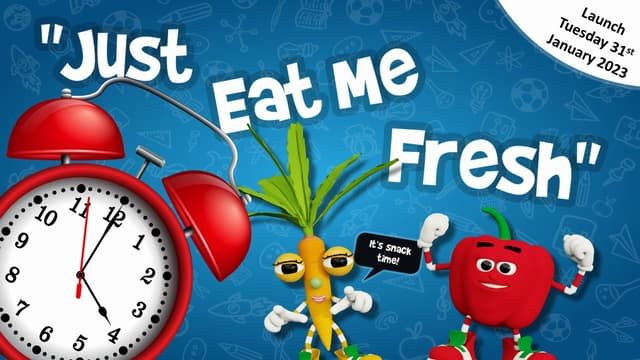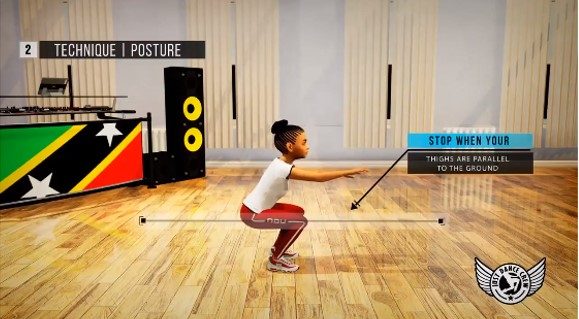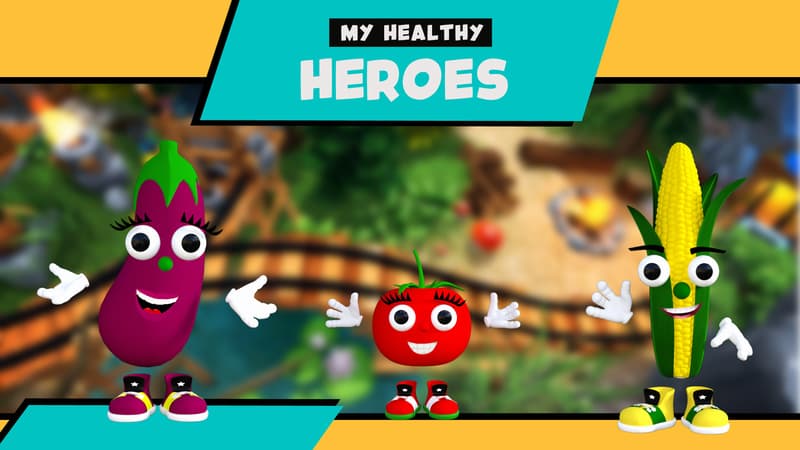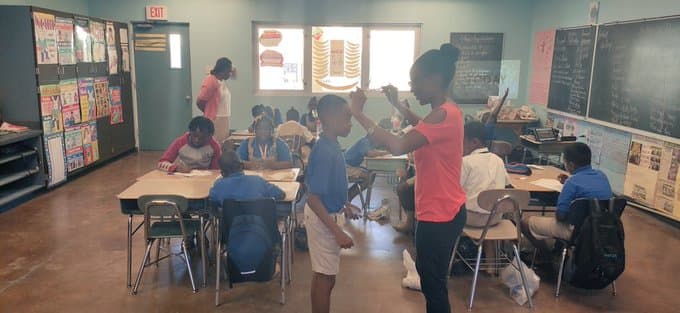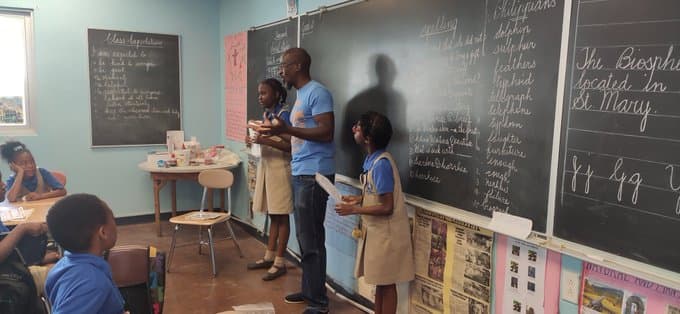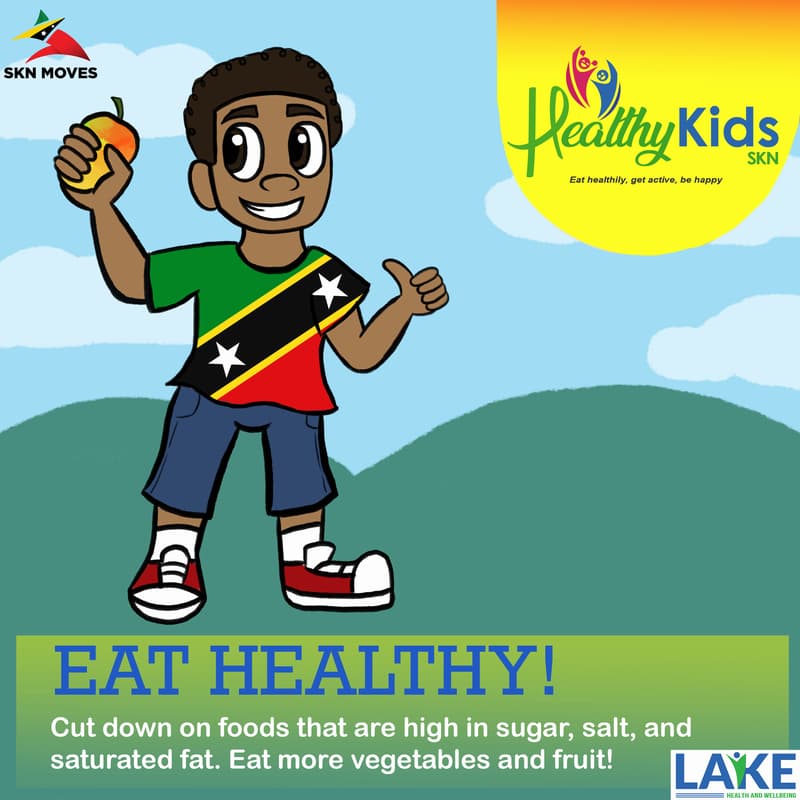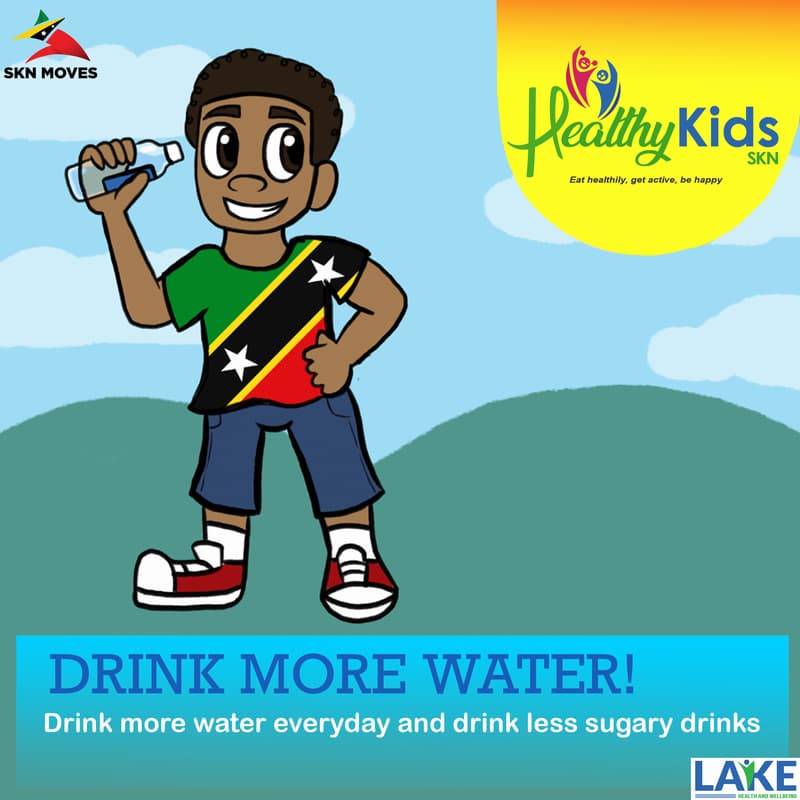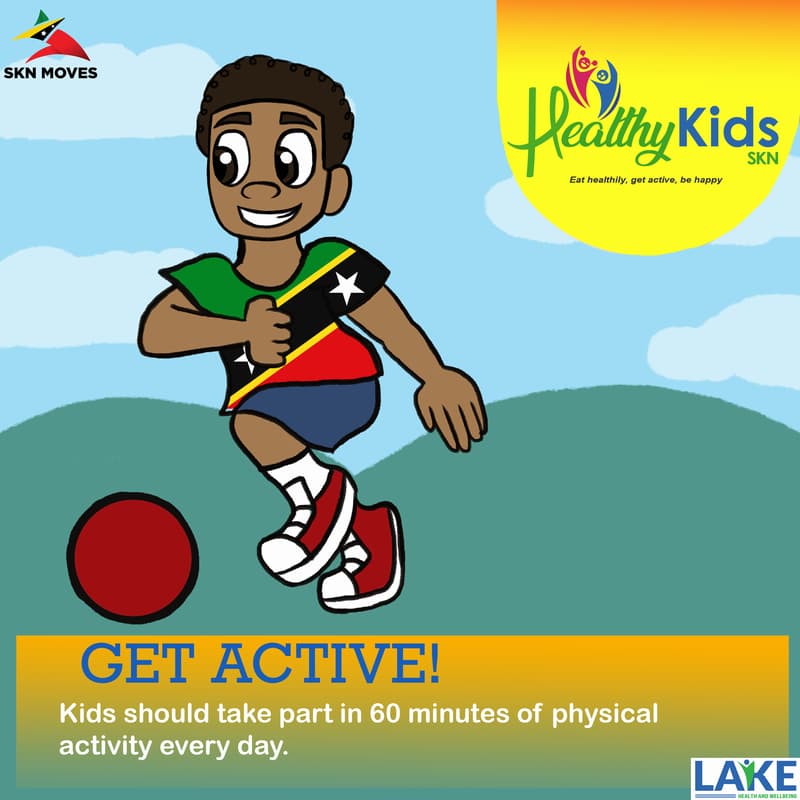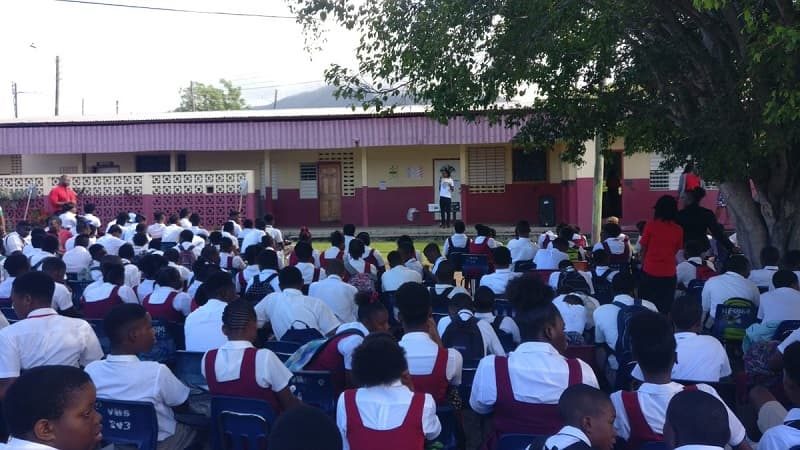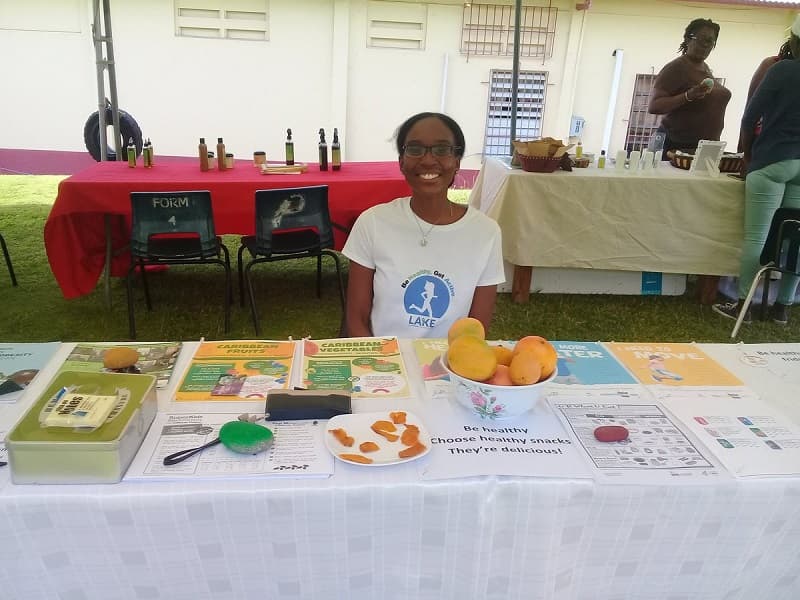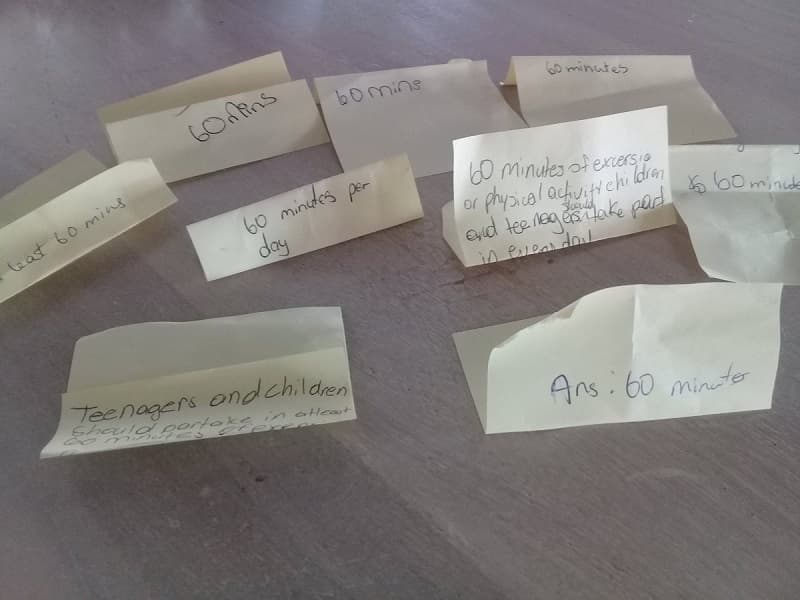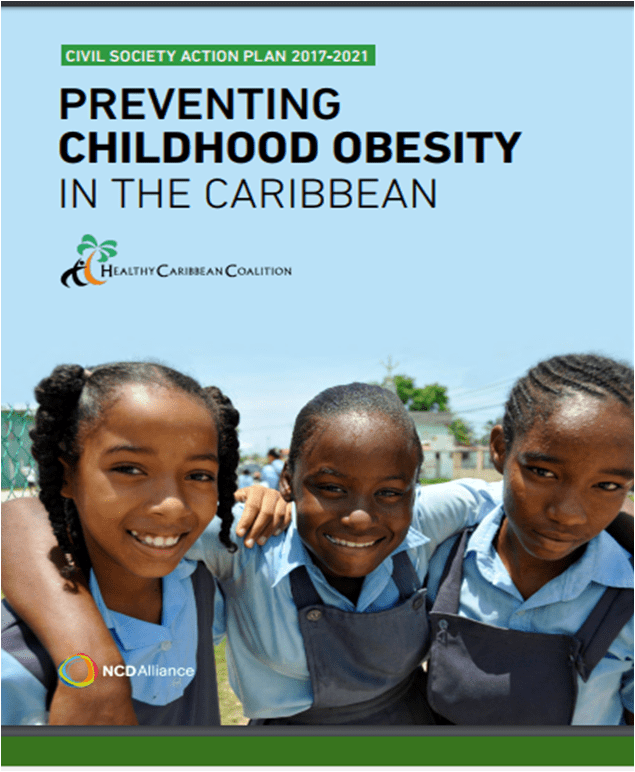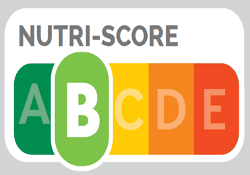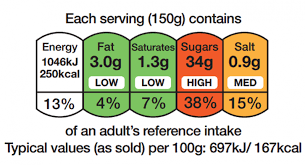On 21st February 2020, we were delighted to start the pilot for our My Healthy Heroes program with over thirty wonderful, enthusiastic fourth-graders from the Immaculate Conception Catholic School (ICCS) in St Kitts.
Our My Healthy Heroes program aims to educate and empower children to make healthy choices by tapping into their creativity to highlight the importance of a healthy lifestyle in a fun and engaging way.
This pilot project with the ICCS aimed to test our resources and characters (Healthy Heroes, Sugary Drinks Assassins and Junk Food Villains) and determine whether our approach would be effective at educating children about healthy eating and more importantly facilitate a change in their behaviour.
Getting Ready for the Pilot
For six months, we worked closely with the Taiwan International Cooperation and Development Fund and teachers at the ICCS to develop a collection of resources that would align with the school curriculum, particularly with the healthy eating classes currently being delivered to fourth graders as part of Health and Family Life Education (HFLE).
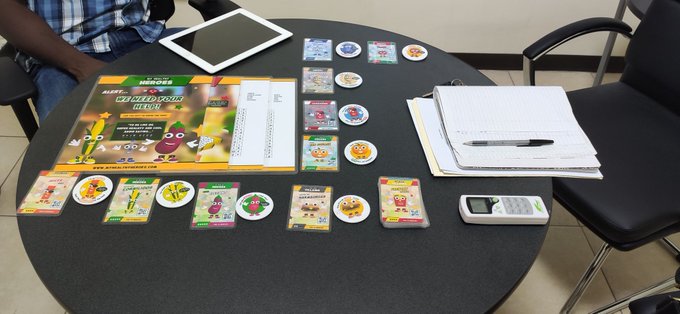
One of our My Healthy Heroes planning meetings
The resources we developed were based on three types of characters.

My Healthy Heroes. A group of characters that represent fruits and vegetables, for example, Miss Mangolicious and Professor Cornelius Cob.
Sugary Drinks Assassins. A collection of characters that raise awareness of the dangers of sweet drinks such as the Soda Pop Sniper and Juicer Jones.
Junk Food Villains. A set of characters that educate children about the impact that junk food has on their health (Greasy Grey Chicken Leg, Zerger the Harmburger etc.)
Using these characters, we then went on to develop a lesson plan for teachers, a set of information cards, badges, fridge magnets, activity sheets (food trackers, drinks trackers, food groups, word searches, mazes etc.) and a series of data collection sheets (questionnaires for teachers, students and parents).
We also explored ideas for how we could make classes engaging, encourage children to critically analyse the importance of a healthy lifestyle and introduce creative ways for children to demonstrate what they have learnt.
Through a series of brainstorming meetings, we decided on introducing two creative assignments. The first would be to ask students to write a rap, poem or adventure story based on our characters and what they have learnt about healthy eating. Their creative writing would then be used to create a healthy eating anthology which students can have as a keepsake but most importantly can be used to educate other children about healthy eating.
The second assignment would be to bring their creative writing to life using stop motion animation. In this activity, students will develop a short animation that will communicate a healthy eating message.
Delivering the Pilot
After months of planning, we were really happy to implement our ideas and began on a sunny Friday in February with two fourth grade classes. Our first session with fourth-graders was what we called week 0, a pre-assessment session. During this session, we introduced students to our project and were thrilled at their response. They were excited, enthusiastic and very keen to learn more about My Healthy Heroes – a great start. We also took some basic measurements – height, weight, body fat and waist circumference – of each child and asked each student to complete a questionnaire to find out more about their eating preferences and what they knew about healthy eating. We also gave students a food tracker and asked them to make a note of everything they ate over the following seven days.

Taking some measurements
Prior to this session we sent students home with a questionnaire for their parents to further explore their eating habits and identify any challenges that parents may have in introducing healthy eating practices at home.
Right now, we’re still analyzing this information, but so far this data has been very insightful. We’ll report back on this in a future blog when all the data has been analysed.
After our pre-assessment session, we visited the school for a further four sessions where we used our resources to discuss the following with students
- Food groups and healthy eating
- Healthy vs. unhealthy eating
- Fruits and vegetables
- Colour categories of fruits and vegetables
- Healthy drinking
- The dangers of sweet drinks
We also gave students their assignment of writing a story, rap or poem based on their selected character (either a Healthy Hero, Sugary Drinks Assassin or Junk Food Villain) and were very impressed at the quality of the work they submitted. The raps were excellent, the stories were creative and the poems were engaging whilst maintaining a healthy eating message as the foundation of their work.

Students getting ready to read their My Healthy Hero stories
They also had to present their piece to the class and all we can say is ‘wow!’ Our fourth graders came prepared. Some students had memorized their raps and had carefully planned how they would recite their piece so that it was engaging and fun. They really did a great job.
Due to the coronavirus, the school the term ended early, so we’ll be continuing our work with fourth graders in the next month or so.
Next, they’ll be working on bringing their assignments to life with stop motion animation and we’ll be doing a post-project assessment to get their feedback on the project.
What We Have Learnt So Far
So far, we have been extremely impressed with fourth graders retention of the information that we have taught them over the past few weeks. They remember a lot and every week they have been able to recall the information they learnt the previous week.
Our characters have been extremely important in getting children excited about learning about healthy eating and improving their retention of the information. They love the characters and were excited to receive the information cards, badges and fridge magnets, and many of them wore the badges to class every week and wanted to be associated with a Healthy Hero and not a Junk Food Villain or Sugary Drinks Assassin. This suggests that if healthy foods are made cool, we can entice children to gravitate towards healthy options.
An issue that we identified was the need to properly explain the harms of unhealthy eating and in a way that resonates with them. There didn’t seem to be an appreciation of the long-term effect of unhealthy eating and through our discussions with them, we felt that because of this they didn’t see unhealthy eating as something that would impact them significantly. So, we tried to strike a balance of being honest and informative without causing any unnecessary fear, the aim was to be empowering.
Children are honest and overall they did say that they would try to make healthy choices but if they had to choose between certain foods, they would still choose the unhealthy option only because they felt it tastes better – so trying to explore tastier ways of preparing healthy food is a must if we are to change children’s eating habits.
Children were also very perceptive, they realized that they tend to make unhealthy choices because it’s easy in terms of it being accessible and they see it on TV all the time. One student said to us, if he had a food tracker all the time, it would remind him to eat healthily. He genuinely just forgets and doesn’t think about the choices he makes during the day when he buys snacks.
A project like ours needs to be long-term, children need constant reminders and nudges to make healthy choices or else the high volume of marketing of unhealthy foods will capture their attention and influence their behaviour.
We have a lot of work to do in the field of Public Health to compete with the food industry and by expanding this work, we hope that we can make a small contribution to getting children excited about healthy food and therefore encourage them to make healthier choices.
Coming up Next
In our next blog, we’ll be sharing fourth-graders stories, raps and poems with you. They did a great job!







